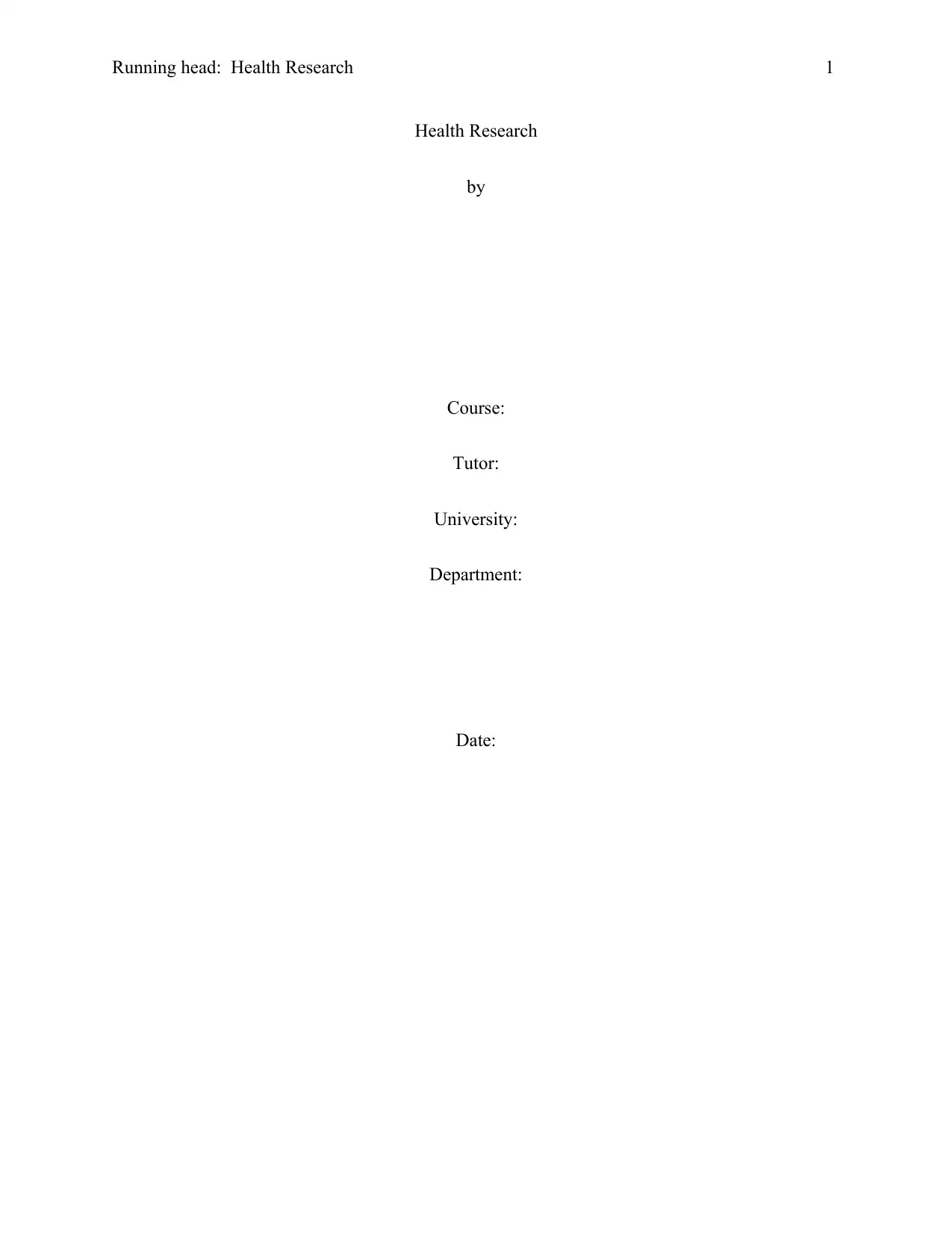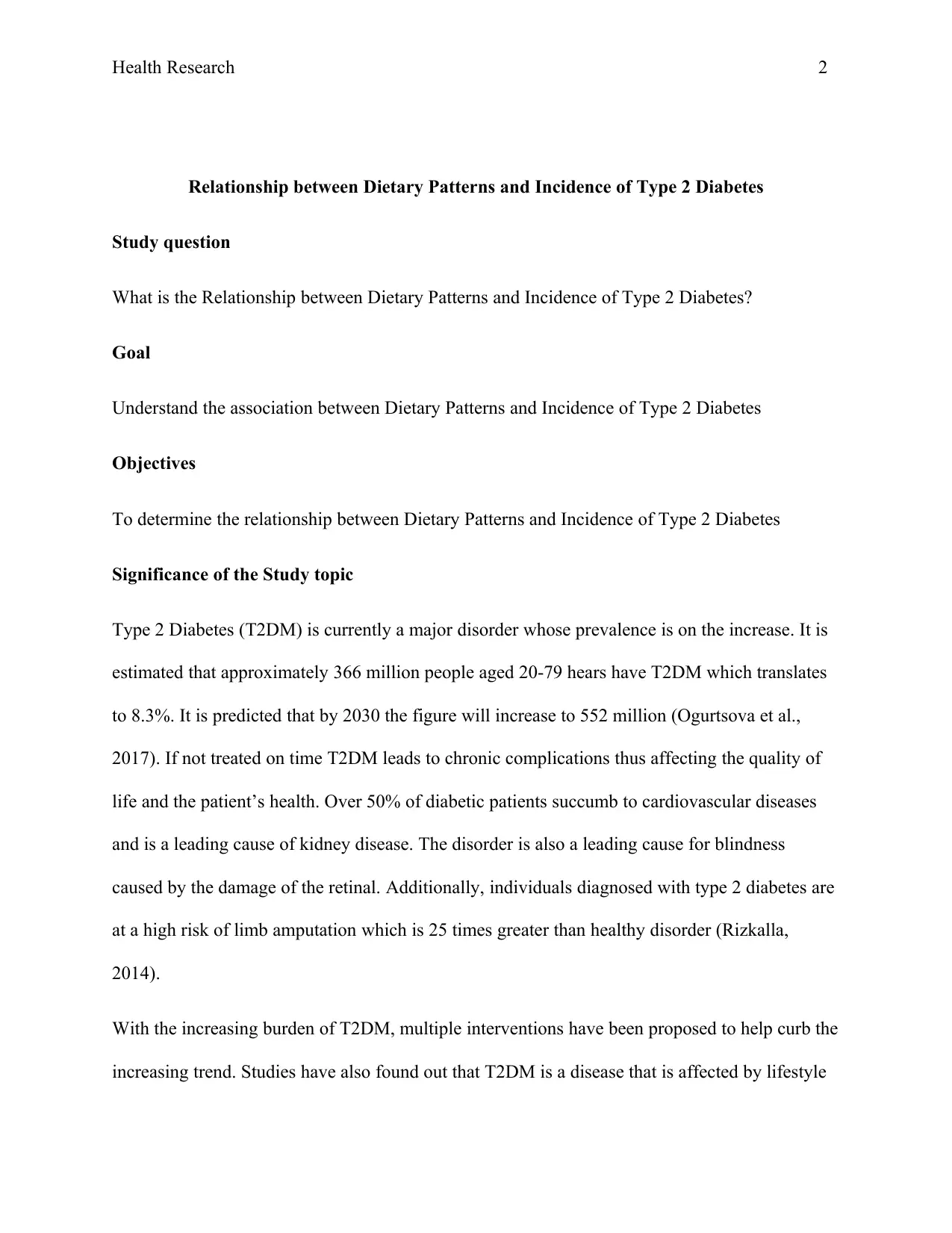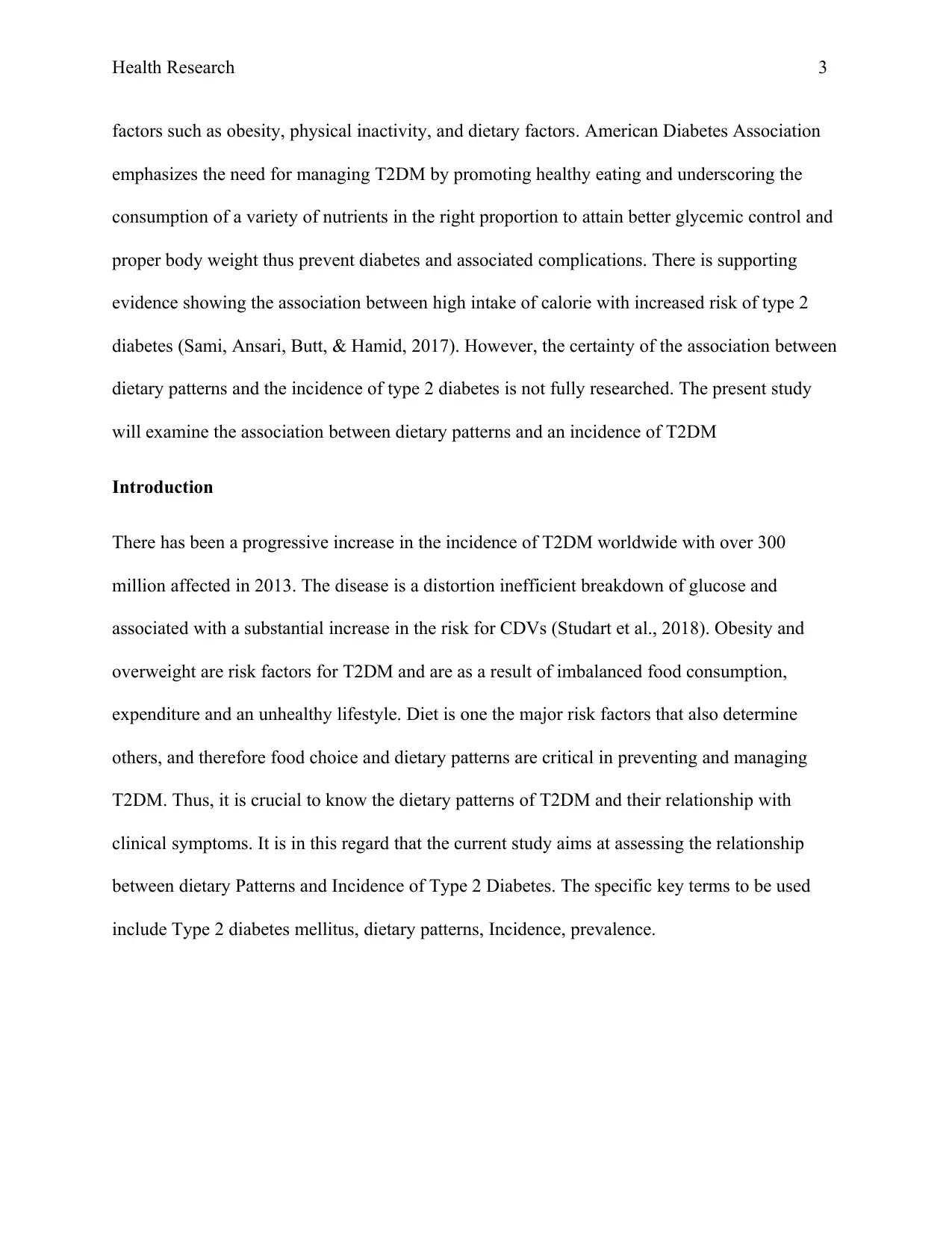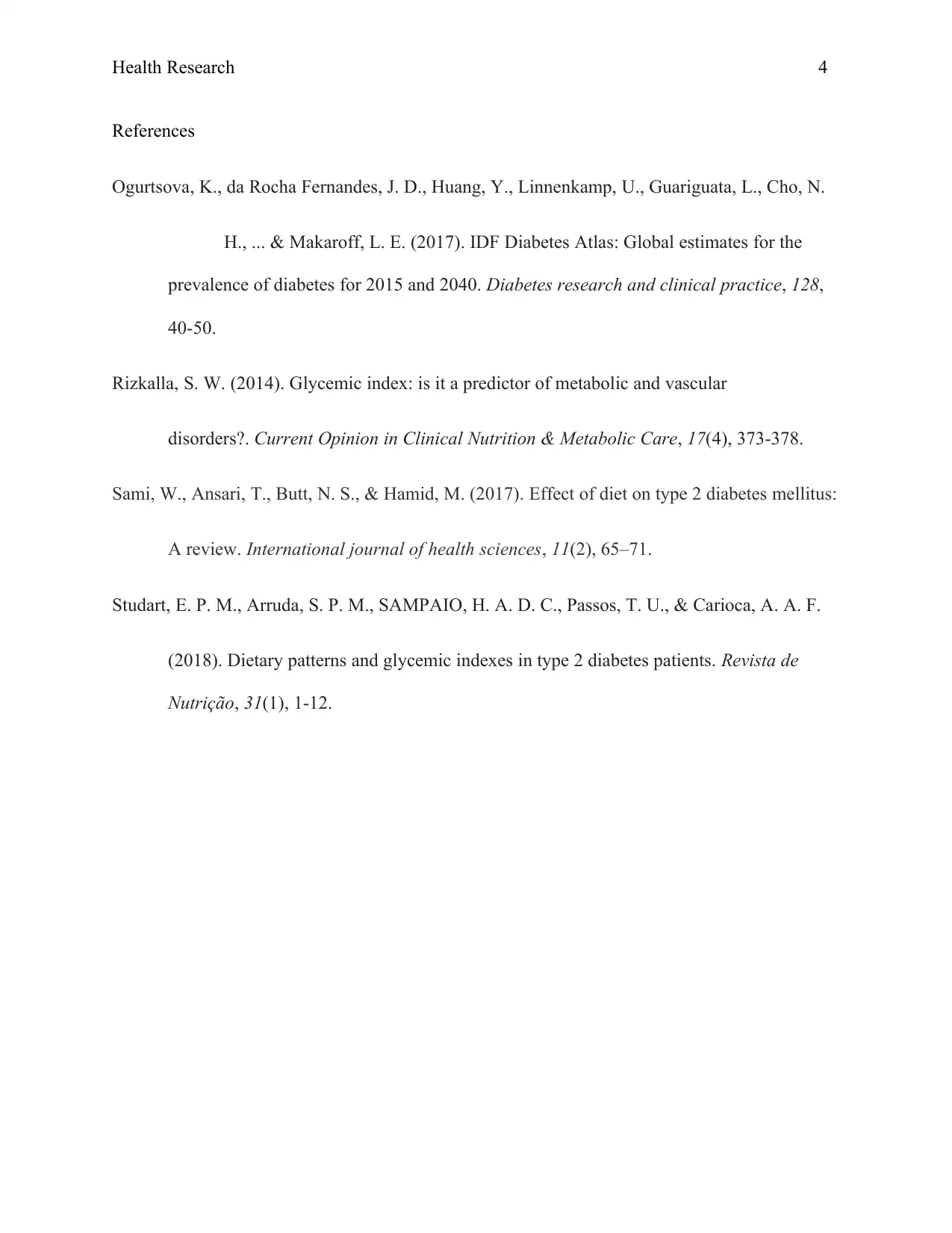University Health Research Report: Dietary Patterns and Diabetes
VerifiedAdded on 2022/10/08
|4
|753
|46
Report
AI Summary
This health research report investigates the relationship between dietary patterns and the incidence of Type 2 Diabetes (T2DM). The study aims to determine the association between dietary patterns and the incidence of T2DM, recognizing the increasing prevalence of diabetes globally. The report highlights the significance of the study, emphasizing the impact of T2DM on health and the importance of lifestyle factors, particularly diet, in managing and preventing the disease. The introduction provides background information on the rising incidence of T2DM, the role of diet as a major risk factor, and the study's focus on specific key terms such as Type 2 diabetes mellitus, dietary patterns, incidence, and prevalence. The report underscores the need for further research to clarify the association between dietary patterns and T2DM incidence, providing valuable insights for health professionals and individuals seeking to understand and manage diabetes through dietary interventions. The report includes references to support the claims and findings.
1 out of 4











![[object Object]](/_next/static/media/star-bottom.7253800d.svg)